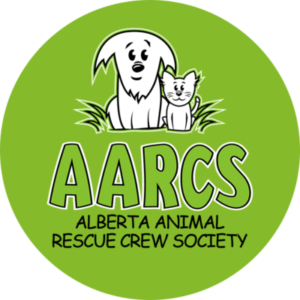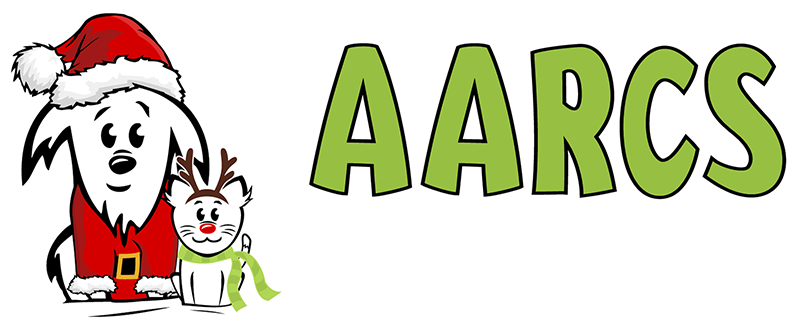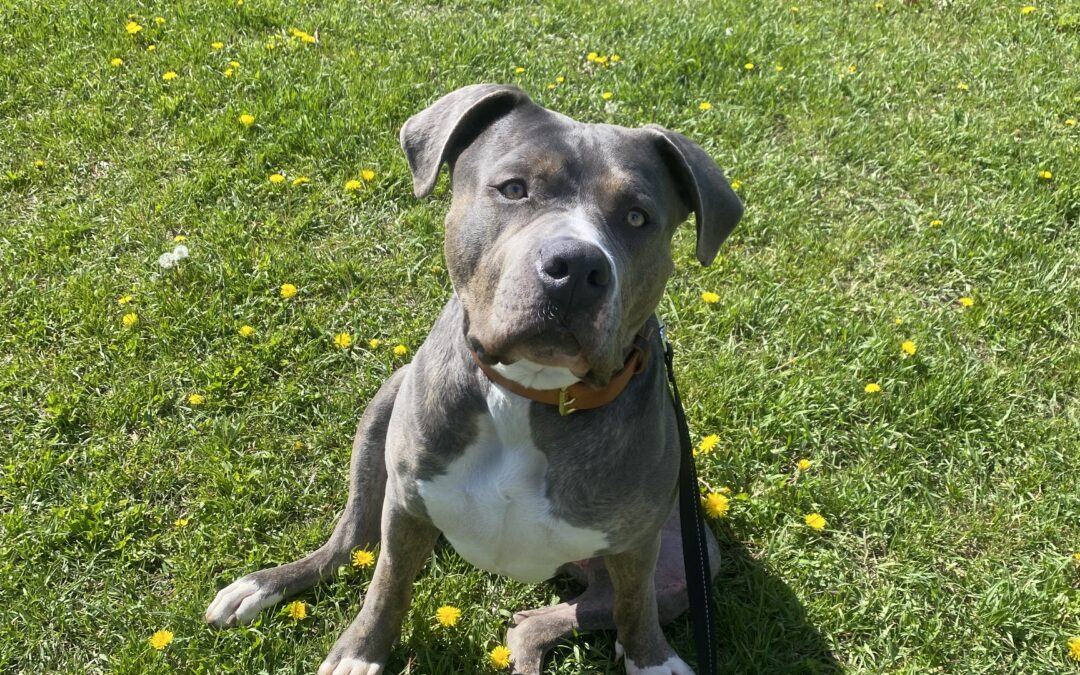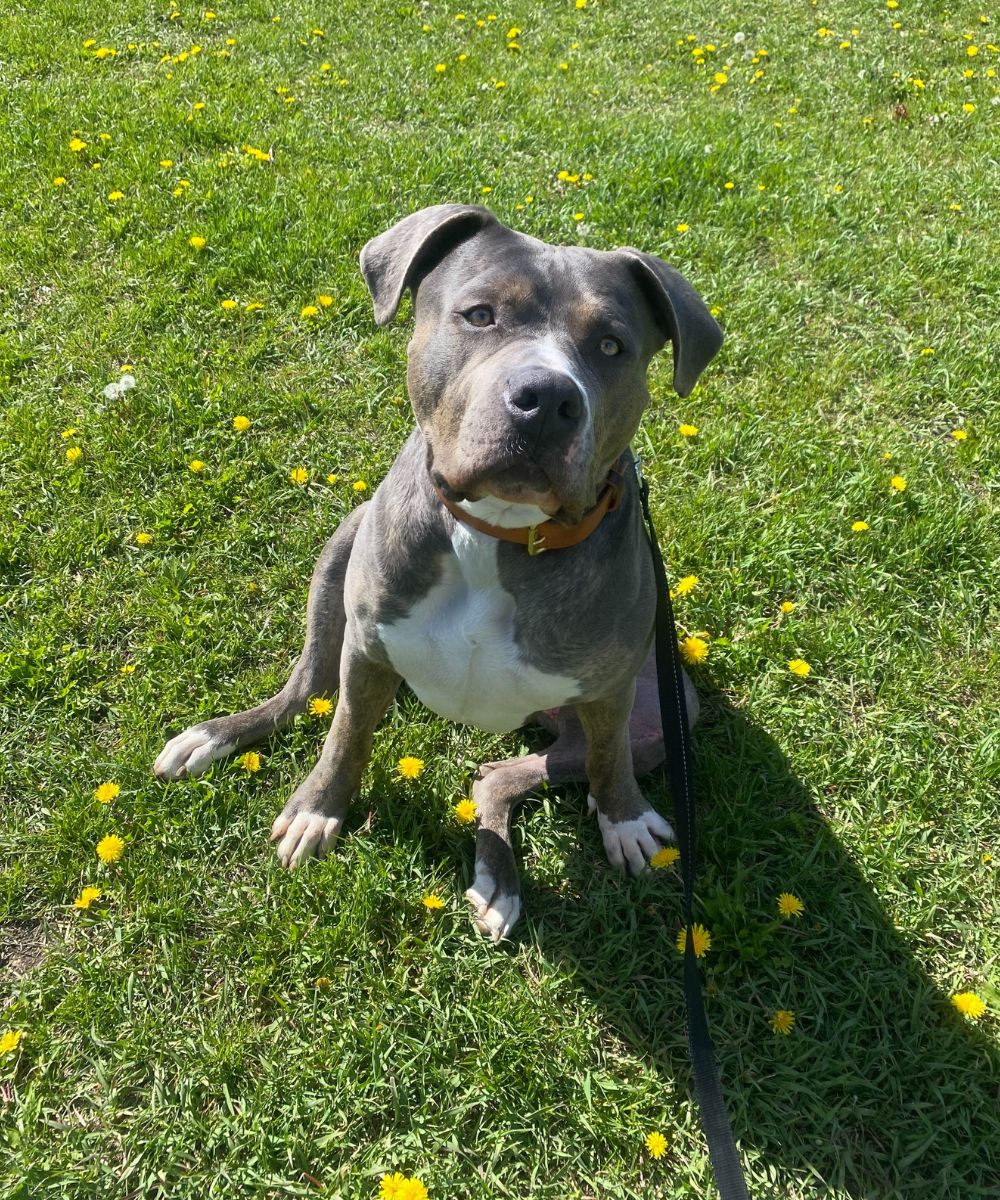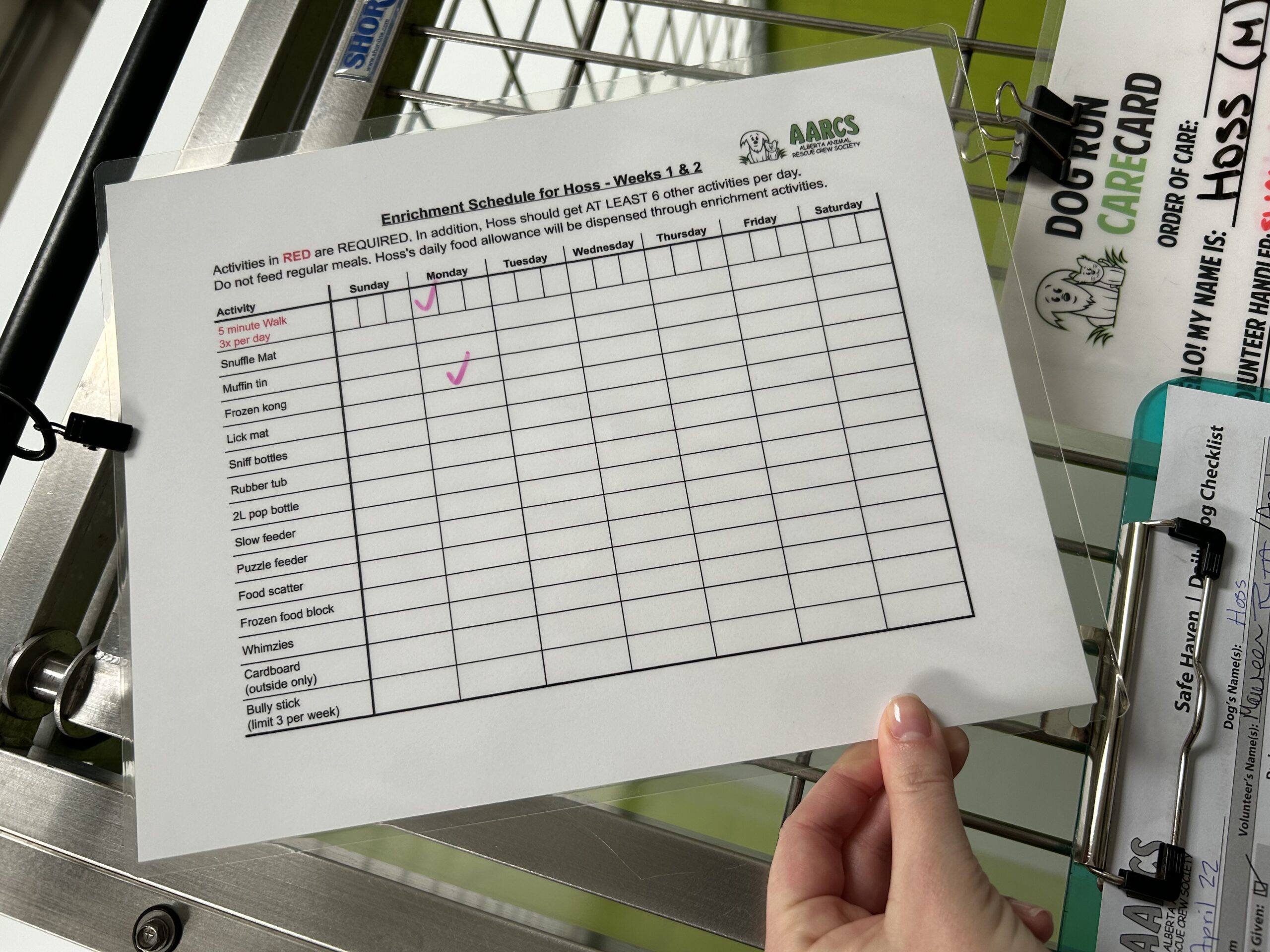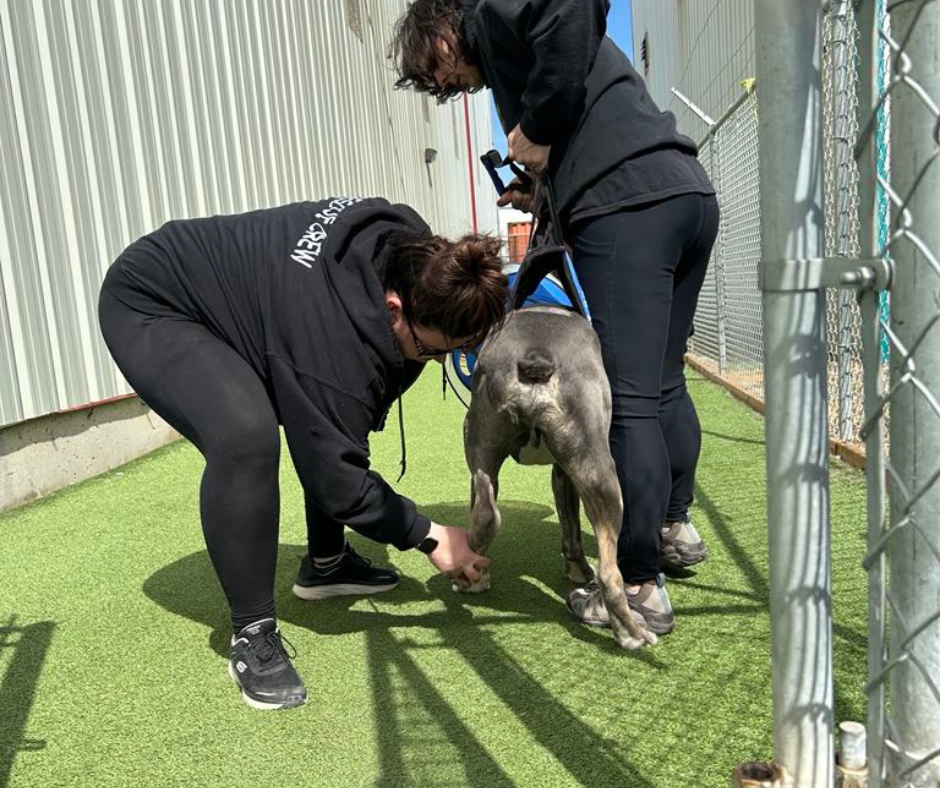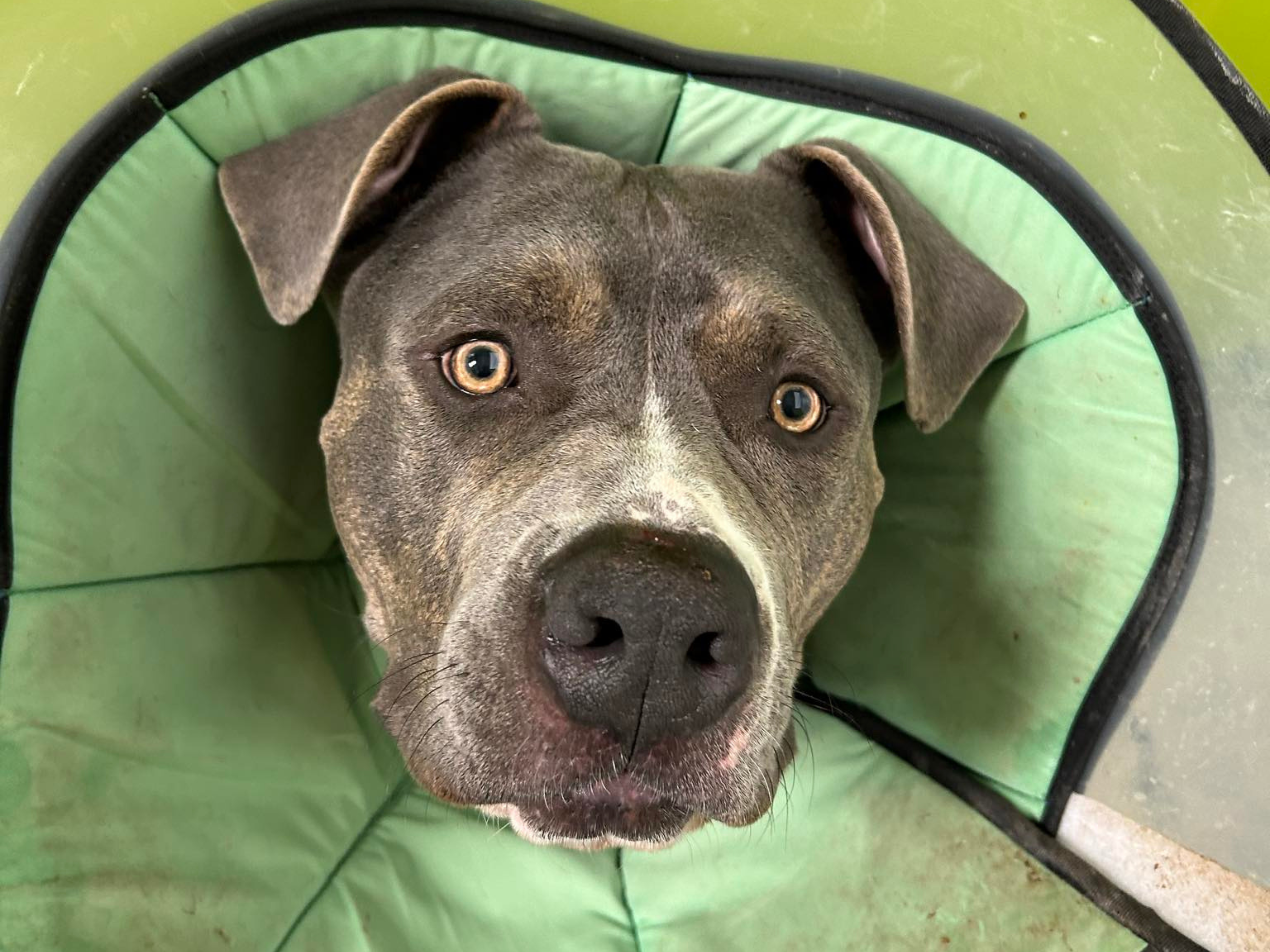Dog Enrichment Ideas
Enrichment is one of those fancy buzzwords that has been floating around the animal-loving community for the past several years. In this blog post, we’ll give you a quick glimpse at what enrichment is, the benefits, and how we use it for our dogs in care at the shelter.
What is Enrichment?
Simply put, enrichment is everything that keeps our pets’ minds and bodies busy! As people, we engage in work, school, chores, hobbies, social outings, games, sports, and more for our daily enrichment. Life would be pretty boring and mundane without these activities! The goal with animal enrichment is to find species-appropriate activities to keep our pets’ social, nutritional, sensory, occupational and physical needs satisfied.
This can look like walks, training, playtime, puzzles, interactions with people and other animals, and more.
You may have heard the phrase, “A tired dog is a happy dog,” and this is partially true! While behavioral challenges can be complex, a bored dog is more likely to become frustrated and find inappropriate outlets for their energy. It’s important to note that enrichment is not a cure-all for behavioral problems that you may be facing with your pet; however, it certainly won’t hurt to start incorporating stimulating and fulfilling activities.
Hoss’s Post-Surgery Journey
One of our recent dogs, Hoss, received a WHOLE LOT of enrichment after a Tibial Plateau Leveling Osteotomy (TPLO) surgery to correct a torn Cranial Cruciate Ligament (CCL) in his knee. Hoss is a BIG DOG with A LOT OF ENERGY, but he was stuck on strict crate rest for several weeks while he recovered from surgery. To keep him happy and fulfilled in the shelter environment when his physical activity was limited, we put Hoss on a busy enrichment schedule.
For the first few weeks of his recovery, Hoss went for short assisted walks three times daily. As he recovered and regained physical strength, the walks increased and physiotherapy exercises were added in. These activities were not only to aid in his healing, but also to take care of his physical enrichment needs and help tire his body out!
We opted to also give Hoss at least six other activities each day to pass the time. Food-based enrichment activities are great to help satisfy nutritional, sensory, occupational and even physical needs, as the dog needs to scavenge, sniff, chew, paw at, lick, and otherwise solve puzzles to access the tasty food. Hoss didn’t receive any meals in a regular bowl during recovery: his food was scattered in snuffle mats, hidden under objects in a muffin tin, frozen into Kongs or blocks, smeared onto lick mats, and dispersed through slow feeder and puzzle feeder toys. Of course, he also chomped on a few bully sticks or other chews each week!
For some sensory enrichment not based around food, Hoss enjoyed (clean) pop bottles filled with different scents, such as animal fur or scat (shout out to volunteer Helene for collecting these items!) For social enrichment, he was treated to “spaw days” with his favourite caregivers, appreciating music, massages, and relaxing time spent with his human friends. To give him an outlet for his playful side, Hoss had a blast destroying mountains of cardboard!
Enrich Your Dog’s Life
While the volume of activities Hoss received in shelter is likely more than the average dog needs most days, one to two added enrichment activities a day are great for your dog’s daily life! Not only do these activities provide mental stimulation, but the extra focus and energy required can sometimes help in managing behavioural challenges by tiring your dog out and providing an appropriate outlet for their energy.
More than anything, enrichment is a great way to help your dog enjoy a full, stimulating, and happy life. Give it a try and watch your dog’s tail wag with joy!
